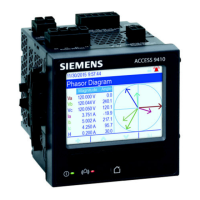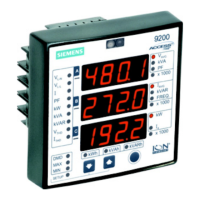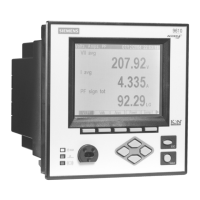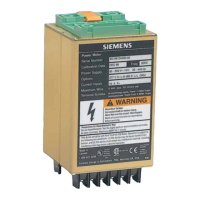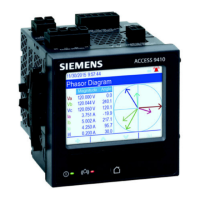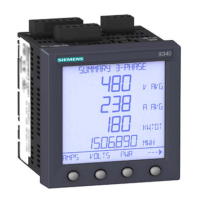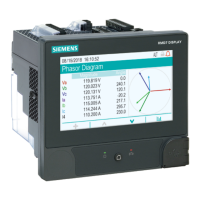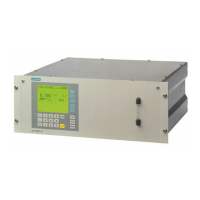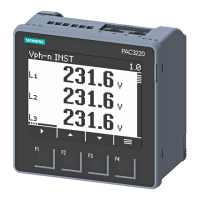Why does Siemens 9410RC Measuring Instruments remote display need updated firmware?
- AAmanda GilmoreAug 2, 2025
Your remote display requires a firmware update to ensure compatibility with your meter. Update the firmware to ensure compatibility.
Why does Siemens 9410RC Measuring Instruments remote display need updated firmware?
Your remote display requires a firmware update to ensure compatibility with your meter. Update the firmware to ensure compatibility.
What to do if Siemens Measuring Instruments remote display cannot communicate to meter?
If your remote display cannot communicate with your meter, check the connection between the meter and the display. Also, check the meter’s status LED to confirm that the meter is operating normally.
What to do if Siemens 9410RC remote display is undergoing a firmware upgrade?
If your remote display is undergoing a firmware upgrade, do not disconnect it from your meter.
General guidelines and warnings for safe operation and maintenance of the device.
Introduction to the 9410 series power and energy meters and their capabilities.
Details the bi-directional 4-quadrant energy metering capabilities of the meter.
Demonstrates setting volts mode and PT/CT ratios via the meter's display interface.
Configuring standard, advanced, or revenue security for meter access and data protection.
Details of security parameters like passwords, web server access, and protocol lockout.
Guidelines for enhancing meter security through password and protocol settings.
Recommendations for creating and managing strong, secure passwords.
Overview of meter communication capabilities via Ethernet and serial connections.
Details on using the meter's dual Ethernet ports for network connectivity.
Introduction to SNMP for network performance management and device monitoring.
How the meter is integrated into an IEC 61850 system and default data availability.
Overview of DNP 3.0 support, concurrent connections, and serial/Ethernet port assignment.
Explanation of meter time types, synchronization methods, and internal clock usage.
How time synchronization source and message duration affect clock accuracy.
Overview of firmware, templates, and procedures for upgrading meter software.
Explanation of firmware as the operating system and upgrading procedures.
Steps for diagnosing and resolving issues with meter option modules.
Explanation of meter data logging capabilities and data recorders.
Configuring event logging priorities and cutoff values for the event log.
Configuring event logging priorities and cutoff values for the event log.
Introduction to the meter's onboard and optional digital and analog I/O capabilities.
Configuring meter's LED or digital output for energy pulsing applications.
Formula and process for calculating the maximum kWh per pulse value.
Explanation of meter alarms, their configuration, and event logging.
Description of the four types of alarms: Setpoint, Digital, Disturbance, and Unary.
Setpoint-driven alarms monitoring electrical system behaviors and conditions.
Method to disable alarms via the display to prevent nuisance alarms during maintenance.
Clearing accumulated parameters and reinitializing meter settings.
Resetting option modules to restore communication and normal operation.
How voltage and current inputs calculate power and power factor.
Definition and calculation of power factor, including true and displacement PF.
Explanation of apparent, active (real), and reactive power components in AC systems.
Meter capabilities for measuring voltage/current harmonics, K-factor, and crest factor.
Monitoring power system voltage and current for sags and swells (disturbances).
Importance of harmonics information for power quality analysis and compliance.
Steps to view detailed harmonics data, including THD, on the meter's display.
Information on meter testing, factory verification, and accuracy standards compliance.
Common methods for testing meter accuracy using test voltages and currents.
Formula and process to calculate the number of pulses needed for accuracy testing duration.
Primary features of revenue meters, focusing on accuracy and protection against tampering.
Three types of security systems: anti-tamper seals, password, and hardware-based.
Specific security features for revenue-qualified firmware and upgrade authenticity.
Features and settings that cannot be edited once the meter is revenue-locked.
Physical and environmental specifications for panel mount and DIN meters.
Accuracy specifications for apparent power, current, voltage, frequency, and power quality parameters.
Accuracy specifications for apparent power, current, voltage, frequency, and power quality parameters.
Power quality standards compliance for voltage unbalance, harmonics, and THD.
| Brand | Siemens |
|---|---|
| Model | 9410RC |
| Category | Measuring Instruments |
| Language | English |
